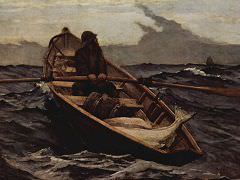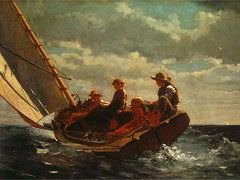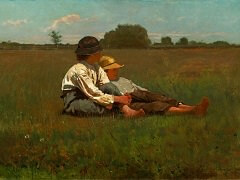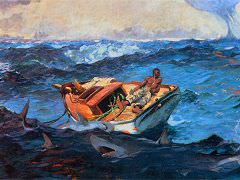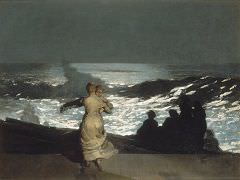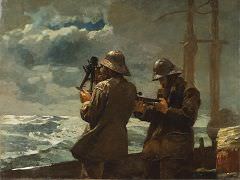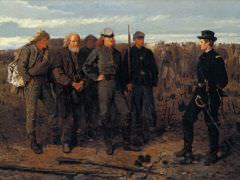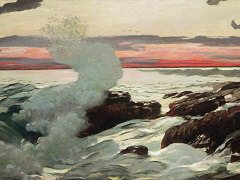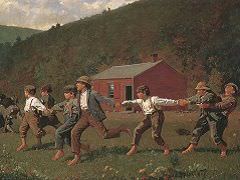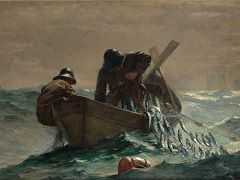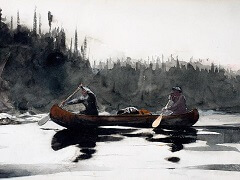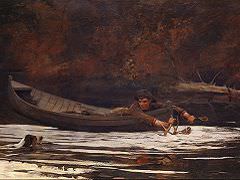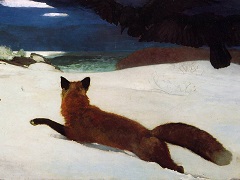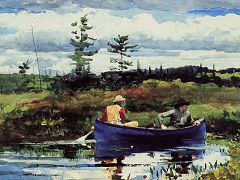The Veteran in a New Field, 1865 by Winslow Homer
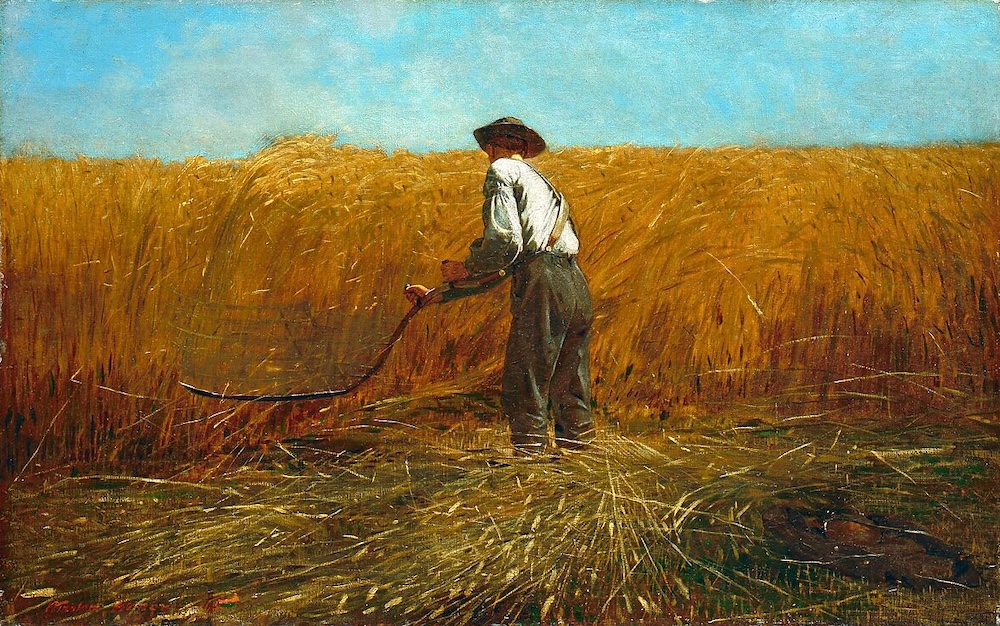
After General Robert E. Lee's surrender at Appomattox in April 1865, the Union and Confederate armies were peacefully disbanded. The soldiers who had survived the ordeal were free to go home and resume their pre-war occupations. The Veteran in a New Field depicts one of those Civil War veterans recently returned from the front, harvesting a field of grain in the midday sun. The wheat has grown high, and the field stretches all the way to the horizon; an unusually bountiful crop had, in fact, marked the end of the war. The farmer's military jacket and canteen (with an insignia that identifies him as a former Union soldier) lie discarded in the foreground, almost covered by fallen stalks of grain.
Winslow Homer completed The Veteran in a New Field in the autumn of 1865, only a few months after Appomattox. The artist was a sort of veteran himself, having served on the front as an illustrator for the New York periodical Harper's Weekly. In the sketches he made to accompany military reports, Homer tended to focus on the commonplace activities of a soldier's life rather than the climax of combat. When he returned to civilian life and began to paint in oil, Homer continued to favor themes from ordinary life, such as this image of a soldier resuming work in the fields.
The optimistic spirit of Homer's painting only makes its darker undertones more moving. The new field of the title can't mean this field of grain, which is obviously mature and ready to harvest. It must refer instead to the change in the veteran's occupation which necessarily calls to mind his previous activity on the battlefield. Because some of the bloodiest battles of the Civil War had been fought in wheat fields, fields of grain, in popular consciousness, were associated with fields of fallen soldiers. One particularly disturbing photograph of soldiers who had died in battle at Gettysburg was published with the title A Harvest of Death.
In keeping with those undertones, Homer's veteran handles a single-bladed scythe. By 1865, that simple farming implement was already out of date; a farmer would have used the more efficient cradle to mow a field that size. In the original version of the painting, the veteran did work with a cradled scythe (its outline is faintly visible on the left side of the canvas), but Homer evidently decided to paint it out. He replaced an emblem of modern technology with the more archaic tool, and gave a picture of a farmer in his field an unsettling reference to the work of the grim reaper, the age-old personification of death.
The Veteran in a New Field refers both to the desolation caused by the war and the country's hope for the future. It summons up the conflicting emotions that took hold of American's relief that the Civil War was over, and grief for the many lives that had been lost. Nor did the loss of lives end on the battlefield; only days after Appomattox came the assassination of Abraham Lincoln, and the nation sank into a collective state of mourning. The Veteran in a New Field thus takes on another dimension, as an expression of despair over the senseless death of a great president.
The image of a soldier returning to his farm would have reassured Homer's audience that life went on. The veteran appears to have set aside his Army training along with what remained of his military uniform to harvest a field that once again yields the gift of golden wheat, which in Christianity is a symbol of salvation. Even in the aftermath of the worst disasters, the artist seems to say, life has the capacity to restore itself.

